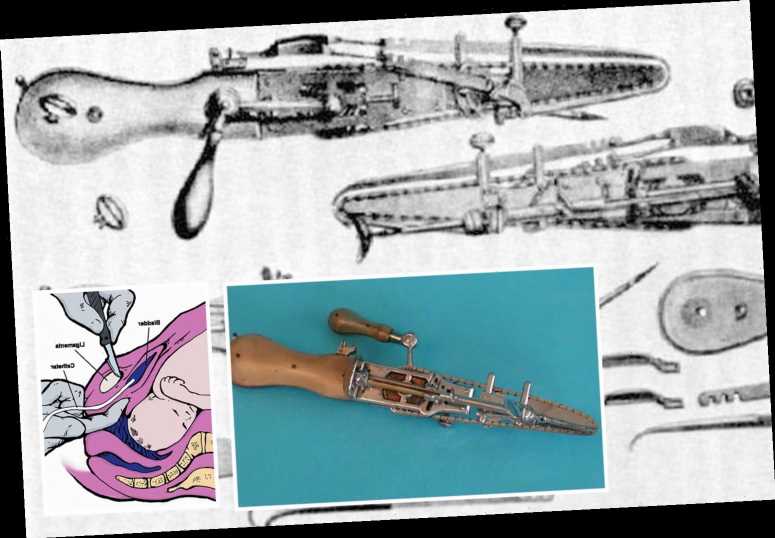WHEN you hear the word "chainsaw," you probably think about lumberjacks chopping wood or gory horror movies.
Chances are childbirth is not something that springs to mind.
Yet, medics are now reminding people about where chainsaws really originate from which is sure to make your stomach churn.
It turns out these monstrous devices were actually invented for bringing babies safely, yes safely, into the world.
Before the common use of the C-section, all babies had to be passed through the birth canal.
However, as we know, babies can become obstructed in there if they are breech or too large.
When babies couldn't fit through or they would get stuck in the pelvis, parts of bone and cartilage were removed to create more space for the baby.
The procedure, which was known as a "symphysiotomy," was originally performed by hand using a small knife and saw to remove the bone.
And to make things worse, this was all done without anesthesia to a woman in the middle of giving birth.
It took a long time and it was messy and obviously painful.
However, in the 1780s, in a bid to make the removal of the pelvic bone easier and less time-consuming two doctors named John Aitken and James Jeffray invented the chainsaw.
You're probably picturing those enormous tree-chopping devices we use nowadays, but the original was much smaller.
What is a symphysiotomy?
A symphysiotomy was a procedure carried out on pregnant women before, during or after birth in the place of a Caesarean Section.
The procedure involves slicing through the cartilage and ligaments of a pelvic joint (or in extreme cases, called pubiotomy, sawing through the bone of the pelvis itself) to widen it and allow a baby to be delivered unobstructed.
The procedure carried the risk of urethral and bladder injury, infection, pain, and long-term walking difficulty.
Symphysiotomies became a routine surgical procedure for women experiencing an obstructed labour from 1597.
They became less frequent in the late 20th century after the risk of maternal death from caesarean section decreased (due to improvement in techniques, hygiene, and clinical practice).
It is estimated that 1,500 women unknowingly and without consent underwent symphysiotomies during childbirth in the Republic of Ireland between 1944 and 1987.
In 2002, Survivor Matilda Behan and her daughter, Bernadette, set up an advocacy group for the victims called Survivors of Symphysiotomy (SoS).
It looked like a modern-day kitchen knife with little teeth on a chain that wound in an oval.
The tool was a success and it continued to be used for most of the 19th century.
It was even used for other bone cutting operations and amputations during surgery until medical advances saw it phased out.
It then evolved into a wood chopping tool when people realized how quickly and easily it was to get through, well, anything.
It became larger and more powerful and eventually grew to be the brutal device we know today.
Symphysiotomies are no longer performed but sometimes still happen in "Third World" countries where an operating room for a caesarian section is unavailable.
“They gave me gas and air and an injection, and took me to another room, where they tied my legs up on each side,” a woman in Ireland told The Guardian, referring to her 1981 procedure.
“There were two nurses on each side of me. I saw this doctor at the end of my bed with a big, long silver thing.
"They made a hole in your private parts, and he inserted this silver thing up and cut the pubic bone and pushed it over to widen your pelvis for you to deliver your baby yourself.”
So next time you see a chainsaw, you know where it really came from…*shudders*.
Source: Read Full Article



